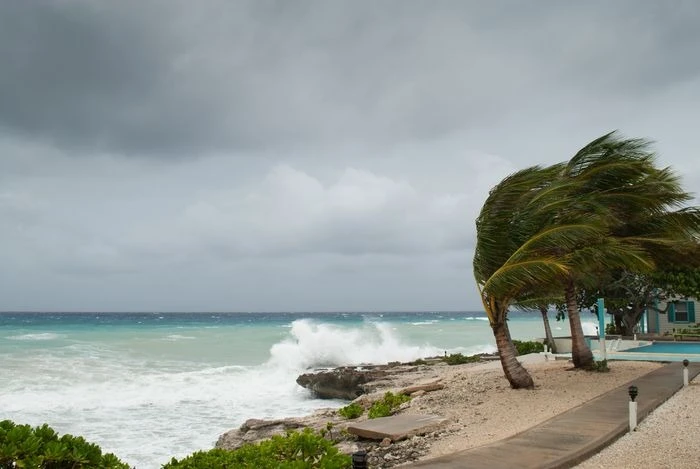
Tropical Storm Elsa formed on July 1, 2021, making this tropical storm the earliest to form in the storm season, since satellite records of these events began. Elsa developed unusually far south and east at this point in the hurricane season. She became a Category 1 hurricane not long after and destroyed parts of Barbados before turning back into a tropical storm and making landfall in Florida.
Elsa then moved up the northeastern shoreline, reaching Massachusetts before finally dissipating. If you were affected by Elsa in Florida and need help with storm damage or hurricane damage, as a result, contact GED Lawyers for more information.
What Path Did Elsa Travel to and Through Florida?
The weather channel reported that on June 30, Tropical Depression Five formed around 1,000 miles to the east of the Windward Islands, located at the eastern end of the Caribbean Sea. Around six hours later, on July 1, it developed into Tropical Storm Elsa, the earliest tropical storm to develop in the region since 1966. By July 2, this storm system developed into a Category 1 hurricane as it crossed Barbados and St. Lucia.
Hurricane Elsa then devolved into a tropical storm as it made its way through Jamaica, western parts of Cuba, and then into the Florida Keys. By July 6th, Elsa became a hurricane again but reverted to a tropical storm by the morning of July 7, where it touched down in Steinhatchee, Florida. Horseshoe Beach experienced winds up to 70 mph, while Cedar Key clocked winds at 55 to 60 mph, driving rain and a storm surge of 2.7 feet.
Trees were downed in Baker County, Columbia County, and Jacksonville, Florida. Areas in Charlotte County, Lee Country, Manatee Country, and Sarasota County experienced flooded roads as well. Parts of Georgia and North Carolina also experienced extreme winds and rainfall before Elsa made its way north up the coast to New Jersey, New York, and Massachusetts.

Areas of Florida Affected by Elsa
Areas most severely impacted by Elsa in the state of Florida included:
- Key West
- Lower Keys
- Cedar Key
- Horseshoe Beach
- Taylor County
- Sarasota County
- Baker County
- Manatee County
- Charlotte County
- Lee County
- Columbia
- Jacksonville
- North Port
- Punta Gorda
Wind Damage
In Florida’s most affected areas, wind speeds measured anywhere from 55 to 70 mph. As a result, many places saw downed trees. In Dowling Park, Elsa either snapped or uprooted around 20 to 30 trees. A tornado hit the south side of Jacksonville, which also snapped trees and damaged power lines. At least one man is believed to have been killed in the U.S. when heavy rainfall and extreme winds snapped a tree that then fell on two cars.
Flood and Rain Damage
The city of North Port, Florida experienced 10 to 11 inches of rain as Elsa hit the city for around 3.5 hours. North Port Fire Chief Scott Titus had warned citizens of potential street flooding in the following days, as all that rain was to settle and move down the Myakka River watershed. Punta Gorda was similarly hit by Elsa’s rainfall, accumulating around 11 inches during the storm’s progression. Manatee County, Duette, Myakka City, Hidden River, Warm Mineral Springs, North Port, and some Anna Maria Island neighborhoods were also on high alert for localized flooding in the aftermath of Elsa.
How Floridians Need to Prepare for Future Storms and Hurricanes
Florida is prone to hurricane damage and storm damage. If you live in the state of Florida, it’s a smart idea to prepare for storm season in advance every year, just in case your area experiences a natural disaster. As a general guide, you should:
Create a Hurricane Kit
This kit should contain all the essentials you may need in the event of a storm or the aftermath of a storm. When a storm hits or the power goes out, many people rush to grocery and convenience stores to secure essential items, which can cause panic. Having a kit filled with batteries, flashlights, a first-aid kit, nonperishable foods, water, medicines, and other essential items can go a long way in storm preparedness.
Secure Your Home in Advance
As soon as you know a dangerous storm is coming, you should take steps to ensure your home experiences the least amount of damage possible. Consider taking the following steps:
- Shutter your windows
- Fasten the roof of your home
- Reinforce your garage doors
- Trim your trees and bushes
- Clear your gutters
- Bring in or secure your outdoor items that high winds may carry away
Prepare for Power Outages
Much of what happens in our daily lives depends on electricity. To prepare for power outages, consider topping off your gas tank in advance and filling an extra container if possible. Get cash out of an ATM in case you can’t run your card later, charge your cell phone before the storm hits, freeze your food in advance to make it last longer, and fill your tub with water so you can use it to flush and wash.

Need Help With Disaster Recovery After Tropical Storm Elsa? Contact GED Lawyers Today
Florida is prone to hurricanes and tropical storms that often leave many parts of the state devastated. If you’ve experienced storm damage or hurricane damage as the result of Elsa, you may need an experienced attorney to help secure the disaster recovery compensation you need to rebuild your home and your life. GED Lawyers may be able to help you navigate your insurance policy and win your claim in the aftermath of a natural disaster. Our property attorneys can handle cases dealing with windstorm damage, flood and water damage, and hurricane property damage.
Contact GED Lawyers if your home and/or property suffered rain and wind damage from Elsa, and meet with one of our attorneys who can help you file an insurance damage claim. Your initial case review is always free.

